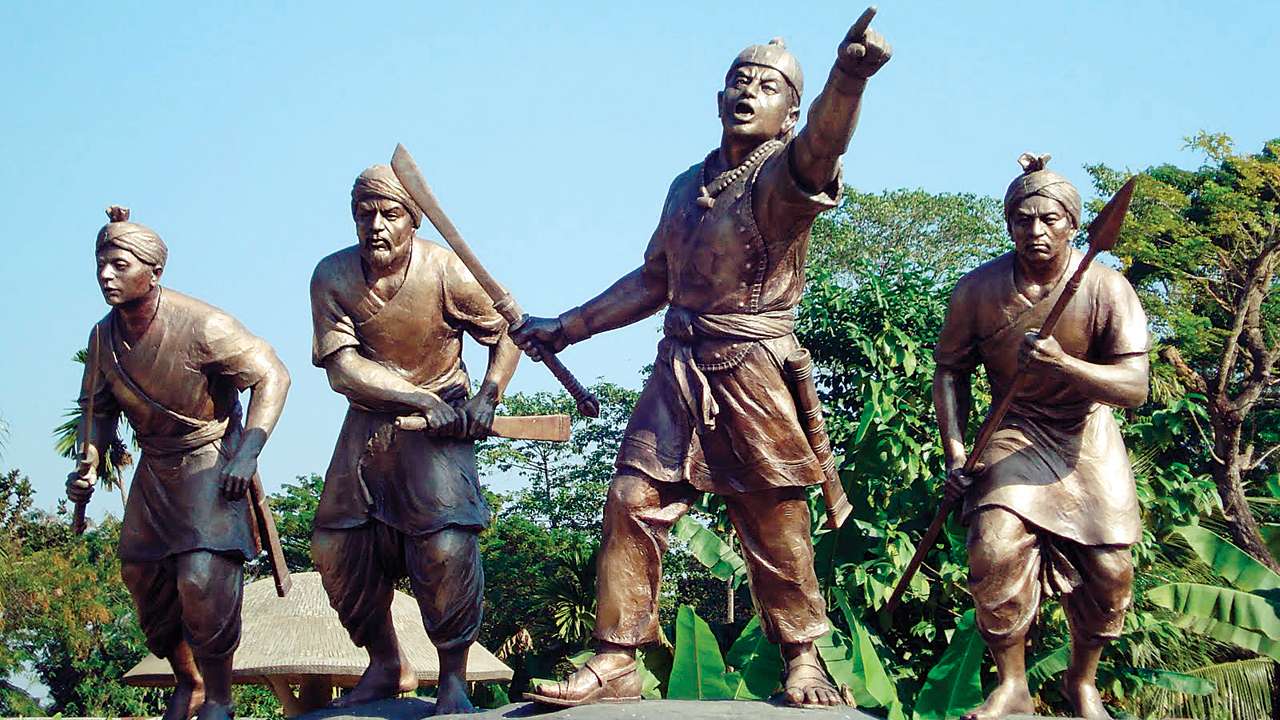Ahom tribes: A world in itself from Assam
Armed with a razor-sharp Hengdang, the swords used by Ahoms during battle, whose handle made of solid gold reflects the shine of the scorching sun. In the searing heat, as sweat and toil runs boisterous in their blood, the warriors of just and righteous make their way through swarms of enemies that line their path in countless rows to victory. They are the least recognised but, treasured who had defeated the mighty Mughals 17 times in intense battles that has made their valour and spirit an important part of the popular folklore of Assam.
They, with their grit and vibrancy, are known to have ruled the present state of Assam for 598 years. The origins can be traced to the arrival of Tai ethnic tribe from Yunnan in southern China in the early 13th century in the Brahmaputra river valley. Numbering close to 9,000 persons, they were led by the great leader Sukhapa of Yunnan.
Their arrival on this new land of India, marked the beginning of a great adventure that lasted for generations. Sukhapa and his companions established themselves at Burhadangoria Than, Tipam where they are known to have not ruled for long. More than two decades later, Chaolung Sukhapa managed to find a suitable place for his capital known as Charaideo where he ruled till his death in the year 1268.
Traditional culture of the Ahoms
During the initial years of their rule, they practiced their traditional culture of animism and ancestor worship among themselves. The most famous of the tradition recorded by historians being the Me-Dam-Me-Phi festival which is a tradition of ancestor worship they brought with themselves to the region.
Their worship also involved sacrifice and, as per some historians, human sacrifice was also something intrinsic to their culture. According to the legend, in their system of sacrifice, instead of innocent persons, convicted criminals were put to death as a means for satisfying their gods. Ahom Kings were also believed to have tried to please their presiding deity, the Langdon, by offering human blood.
Among the many rich traditions of the Ahoms, the Me-Dam-Me-Phi festival was celebrated with great pomp and glory for the first time by the Ahom king Chaolung Sukhapa. He organised the festival on reaching the Brahmaputra valley after crossing the Erawati (Irrawady) river. He dedicated the festival with great delight to his ancestors by sacrificing buffalo, pigs, goats and cows.
Till this day, the festival is celebrated with great gusto and enthusiasm across large parts of Assam. Falling on January 31 each year, it is especially popular in the Ahom populated areas of Sivasagar, Jorhat, Charaideo, Tinsukia and Dibrugarh in eastern parts of the state.
However, now the celebrations don’t involve sacrifice of any big animals such as cows, pigs or buffaloes as majority of those who belong to the Ahom culture now practice Hinduism. Yet, in a nod to the past, small animals like chicken and ducks are still sacrificed on the occasion.
Distinct aspects of the Ahom culture
Their occupation was largely based on agriculture. When they first came to the land of Assam, they were awed by the amazing fertile lands in the Brahmaputra valley, enriched every year by fresh top soil brought by the mighty river in its recurring floods. They also liked it for the weather and abundance of rice crops. Their fascination with such rich agricultural land made them name Assam as ‘Mun-Dun-Chun-Kham’, synonymous to the land of golden grain, referring to rice harvests. For cultivation, they brought with themselves a range of high quality seeds for cultivation. The region continues to produce bountiful harvests each year even today and over eight centuries later, Ahoms very largely continue to be agriculturists.
Traditionally they are known to eat many types of animal meat such as pig, duck, chicken, goat and buffalo. As they belong to the Mongolian race, they are known to eat almost everything though they practise some restrictions based on the culture of Hinduism. These are the same animals they also sacrificed for ritual purposes in the past.
Ahom society
Mixing with other cultures and traditions, notably Hindu, and the passage of time may have diluted, but definitely not erased their culture. For instance, the traditional marriage system of the Ahom community now lasts three days, but in the past it was known to be a nine-day affair. It is known as Choklong and is part of Bor Biyaa. This form of marriage is practiced by only the Ahom community that practices neither polygamy nor matriarchy.
The wedding involves the offering of oblations to 108 deities around a fire of worship. The grandiosity of each wedding showcases the prestige of the Ahom families involved.
“It is an elaborate ceremony, which is very popular among the Ahom community. The marriage ceremony is celebrated for three days with the first day known as Joron Diya, where the bride is offered ornaments and dresses as gifts by the groom and his family. The final day of the ceremony is termed Choklong in which the main rituals of the marriage take place like the bathing of both the groom and the bride,” says Deep Moni Gogoi,an Ahom who is a professor of mass communication in Noida, near Delhi.
“As Ahoms, we are not recognised as a tribe, and don’t fall under the category of Scheduled Tribes, though there are strong movements within the community who are fighting for a recognised tribal status. Over the years the Ahoms, both as a community and in terms of culture, have gone through a lot of changes, and today we proudly call ourselves as an indelible part of Hinduism. Though on special occasions we still practise some form of ancestor worship, where we remember and pray to the glory of our ancestors,” Gogoi tells Media India Group.










